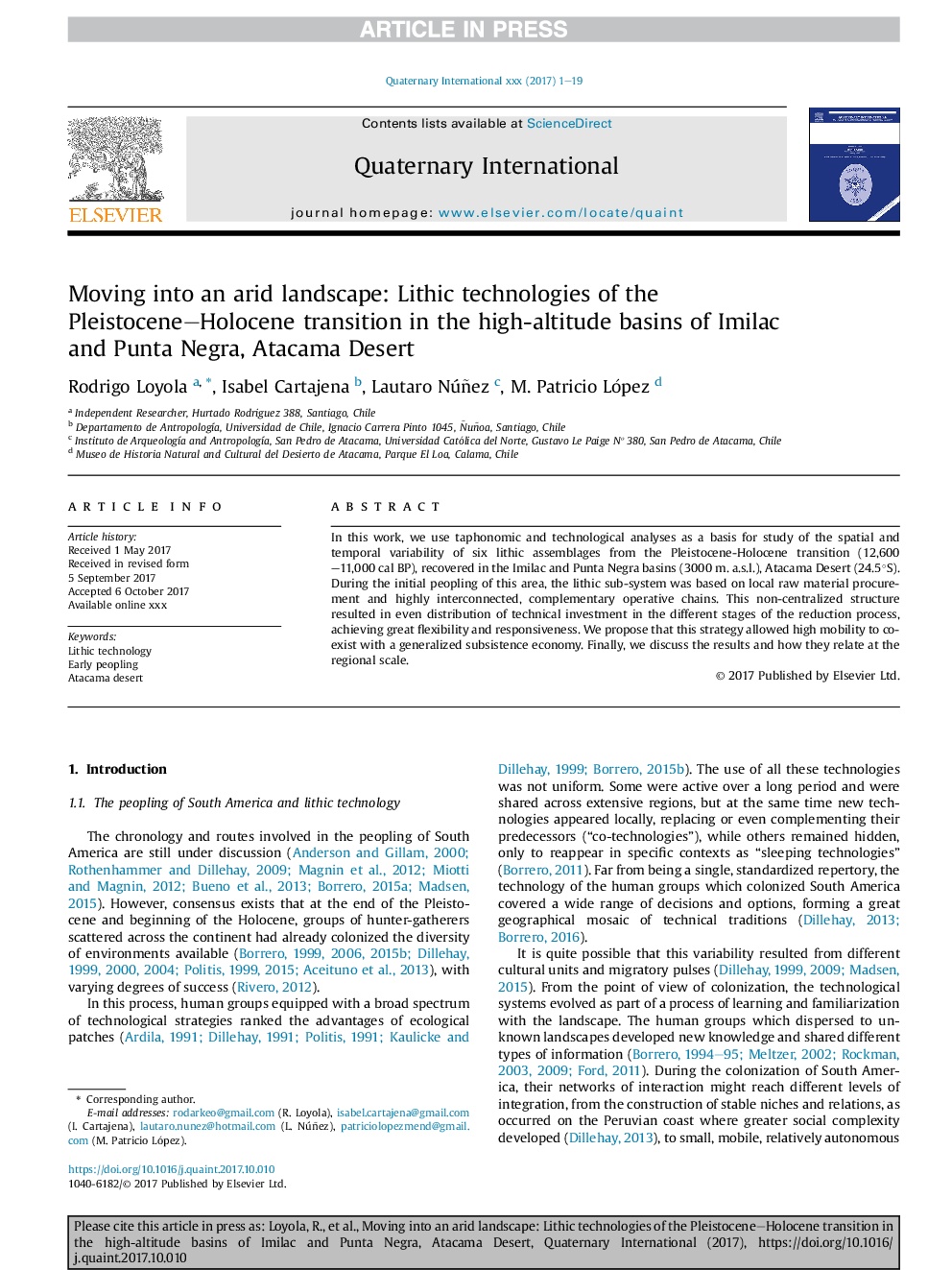| Article ID | Journal | Published Year | Pages | File Type |
|---|---|---|---|---|
| 7449814 | Quaternary International | 2018 | 19 Pages |
Abstract
In this work, we use taphonomic and technological analyses as a basis for study of the spatial and temporal variability of six lithic assemblages from the Pleistocene-Holocene transition (12,600-11,000 cal BP), recovered in the Imilac and Punta Negra basins (3000 m. a.s.l.), Atacama Desert (24.5°S). During the initial peopling of this area, the lithic sub-system was based on local raw material procurement and highly interconnected, complementary operative chains. This non-centralized structure resulted in even distribution of technical investment in the different stages of the reduction process, achieving great flexibility and responsiveness. We propose that this strategy allowed high mobility to co-exist with a generalized subsistence economy. Finally, we discuss the results and how they relate at the regional scale.
Keywords
Related Topics
Physical Sciences and Engineering
Earth and Planetary Sciences
Geology
Authors
Rodrigo Loyola, Isabel Cartajena, Lautaro Núñez, M. Patricio López,
